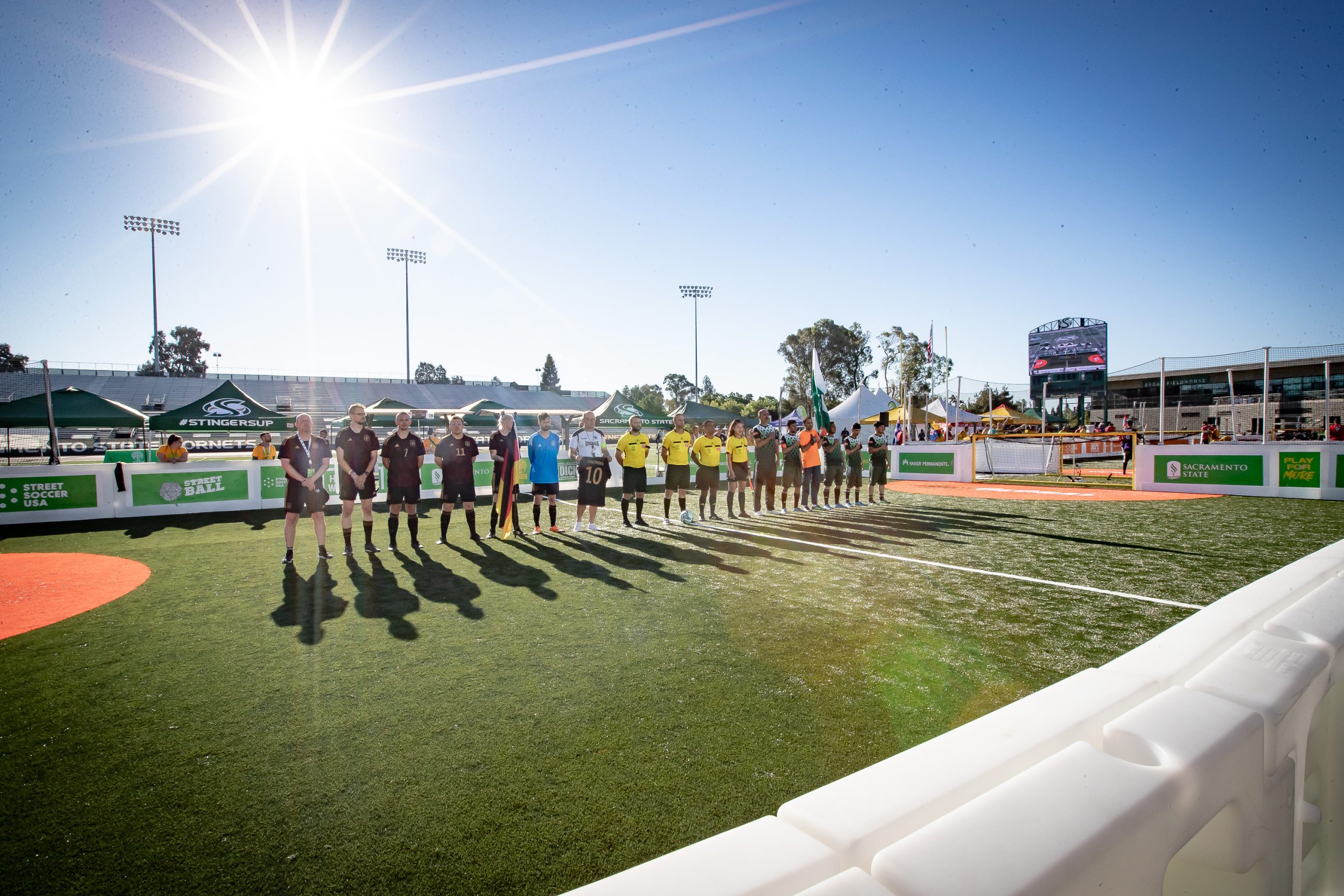Homeless World Cup: Ending homelessness with football

In 2023, the annual Homeless World Cup took place in Sacramento, US.
Billboard
Skyscrapper
Halfpage
The annual Homeless World Cup aims at changing perceptions and attitudes towards people who are experiencing homelessness. In 2023, the international tournament took place in Sacramento, bringing together almost 70 grassroots organisations. Read more about the global network here.
The Homeless World Cup is an international street football tournament that provides a focus for many charities and their year-round activities. The organisation behind the Homeless World Cup also supports the day-to-day work of charities and facilitates international connections, skill sharing and organisation development. In their words, “Being homeless can be incredibly isolating, making people feel removed from society and alone. Joining a football team can be a small but hugely significant step in helping an individual to become part of a community.”

Advocating for a global solution to homelessness
As an annual association football tournament, the Homeless World Cup takes place once a year. Teams of homeless people from various countries can compete. The Homeless World Cup Foundation, a social organisation, advocates for the end of homelessness through the sport of football. The first tournament took place in 2003. Since 2008, there is also a women’s competition, and from 2010 onwards, all tournaments have featured men’s and women’s teams.
Mel Young and Harald Schmied co-founded the organisation in 2001 with the goal of advocating for a global solution to homelessness. The first annual tournament took place in 2003 in Graz, Austria. Other host cities have included Gothenburg, Edinburgh, Copenhagen, Cape Town, Melbourne, Milan, Rio de Janeiro, Paris, Mexico City, Poznan, Santiago, Amsterdam, Glasgow, Oslo, Mexico City, and Cardiff. The headquarters of the Homeless World Cup are in Edinburgh, Scotland.
For players to participate, they must be at least 16 years old and have not taken part in any previous tournaments by the organisation. They must have been homeless at some point after the previous year’s tournament according to their country’s definition of homelessness. Alternatively, they can participate if they make their main living income as a streetpaper vendour, are asylum seekers, or are currently in drug or alcohol rehabilitation and have been homeless at some point in the past two years.
Per team, there can only be a maximum of four players on the court. There are three outfield players and one goalkeeper in each team. Four substitution players are available. Each game is 14 minutes long and played in two halves of seven minutes each.

Mexico’s women triumph in the 2023 Homeless World Cup
In July 2023, the 18th edition of the Homeless World Cup took place at Sacramento State University’s Hornet Stadium. This was the first time that the tournament was hosted by the US. 400 players from 40 different countries travelled to California’s capital city to attend the week-long football tournament. This was the first time that the Homeless World Cup took part since the pandemic.
In total, there were seven trophies at the tournament, four for the Men’s competition and three for the Women’s. The top prizes are the Men’s Homeless World Cup and the Women’s Homeless World Cup. For the last seven years, Mexico’s women have taken the title in the Women’s competition. In 2023, they faced Chile in the final, who were semi-finalists at the last Cup in Cardiff. However, they couldn’t stop the Mexicans winning their eighth Homeless Cup title. In the Men’s competition, a repeat of the Women’s final happened with Mexico taking on Chile again. Here, Chile won, taking the trophy from Mexican hands. The Cup in Sacramento marked the tournament’s 20th anniversary.

Cities Ending Homelessness
Around the world, an estimated 100 million people are experiencing homelessness. And as many as one billion people lack adequate housing. Homeless people often experience social exclusion and stigmatisation, economic hardship and poverty, and physical and mental health problems. The goal of the Foundation is to help end this crisis, meeting the fundamental human right to a home for everyone.
As part of its advocacy work, the organisation compiles global homelessness statistics and information about the member countries. They stress that homelessness can manifest itself in a number of different forms and that it has diverse causes, which are often linked to poverty. Groups at particular risk of homelessness include those on low income, minorities, people living with HIV/AIDS or disabilities, those fleeing war and natural disaster, those seeking asylum, people recovering from addiction, trauma, or abuse, and people who have spent time in state-sponsored institutions.
The World Cup network also places a focus on cities, which is where homelessness is often most prevalent. With the “Cities Ending Homelessness project”, the organisation will build a global network of cities that are committed to ending homelessness. The idea is to share best practices and experience, bringing together the resources of 500 cities and connecting them with social innovators and researchers to develop creative solutions.
Read more: Bordeaux is planning adaptive spaces that serve as football stadiums or riverbank parks.












